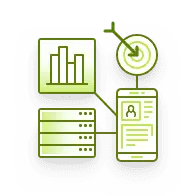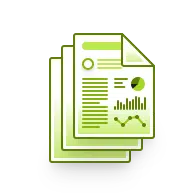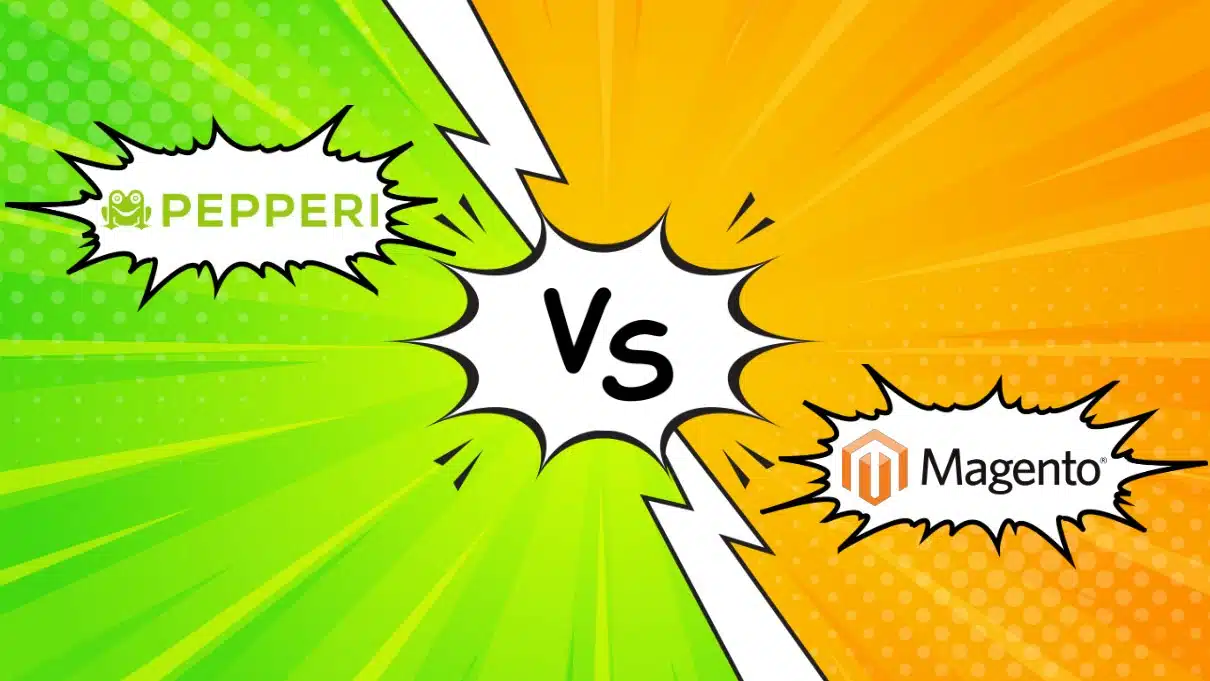10 Essential Features to Look for in B2B eCommerce Software
April 17, 2024 By Yana Persky

In today’s digital age, B2B eCommerce is becoming increasingly prevalent as businesses seek new revenue streams. Many software vendors have realized the untapped potential of B2B eCommerce and make inroads into B2B market by launching new B2B eCommerce solutions.
If you are new to this business, you may think that B2B distributors seem to have a wide array of providers to choose from, however, not all B2B eCommerce software is created equal.
It’s crucial for wholesalers not only to identify the essential features that will help them pave the way for increased sales opportunities but also to differentiate between purpose-built and off-the-shelf B2B eCommerce solutions.
Understanding B2B eCommerce Software
B2B eCommerce software is a specialized platform designed to facilitate online transactions between businesses, as opposed to transactions between businesses and consumers (B2C). Unlike traditional retail eCommerce platforms, which focus on serving directly individual consumers, B2B eCommerce software caters to the unique needs and workflows of businesses engaged in wholesale, distribution, manufacturing, and other B2B activities.
Choosing the Right B2B eCommerce Software
Before we explore the essential features of B2B eCommerce platforms, it’s crucial to assess the vendor’s expertise and experience in the B2B eCommerce domain.
One key aspect to consider is the vendor’s background in the B2B eCommerce market. Did they primarily serve B2C (Business-to-Consumer) or D2C (Direct-to-Consumer) businesses before venturing into the B2B space? If so, did the vendor enter the B2B market through acquisitions, partnerships or have they developed their B2B offerings in-house?
Furthermore, it’s important to evaluate whether the B2B eCommerce platform was purpose-built for B2B transactions, or has it simply added extra features to accommodate B2B scenarios?
A purpose-built platform is designed from the ground up to address the specific needs and complexities of B2B transactions, whereas platforms that merely tack on B2B features typically lack the depth and functionality required for seamless B2B operations and heavily rely on 3rd party apps.
Traditional B2C eCommerce players such as Shopify, BigCommerce and WooCommerce have recognized the potential in the B2B market and have expanded their offerings accordingly. BigCommerce, for instance, entered the B2B space in 2019 through a series of acquisitions. However, it’s evident that BigCommerce’s B2B solutions often fail to fully meet the needs of pure B2B enterprises, particularly mid-size companies and large enterprises with complex B2B requirements.
Similarly, Shopify took steps towards addressing the B2B market by introducing Shopify Plus. While this initiative represents a positive move, the B2B features offered by Shopify still appear to be in the early stages of development and primarily cater to Direct-to-Consumer (DTC) businesses looking to expand into the B2B sector.
Pure B2B businesses, particularly mid-size companies and enterprises, with typical and complex B2B requirements are likely to find BigCommerce, Shopify and WooCommerce’s B2B offerings insufficient and immature for their needs.
Essential Features of B2B eCommerce Software
Now that we have a clearer understanding of B2B eCommerce software and the origin of B2B eCommerce vendors, let’s delve into the essential features that mid-size and large distributors should consider when selecting the right platform for their needs.
Pricing Matrix Hierarchy
The pricing matrix hierarchy is a structured system that manages product prices across various dimensions within a B2B eCommerce platform. Typically, the pricing matrix hierarchy is organized in tiers, with each tier representing a distinct level of pricing logic and priority. For instance, the highest tier may incorporate fixed contract prices negotiated with key clients, followed by subsequent tiers that consider factors like volume-based discounts, promotional offers, seasonal discounts, special pricing rules and promotions or loyalty rewards. By leveraging this pricing matrix hierarchy, a comprehensive B2B eCommerce platform can dynamically calculate prices that are competitive, profitable, and aligned with the business strategy.
Volume-Based Pricing
Volume pricing, also known as quantity-based pricing or tiered pricing, involves setting different price levels for products based on the quantity ordered by the buyer.
As the quantity ordered increases, the unit price typically decreases, providing an incentive for buyers to purchase larger quantities and potentially increasing the total order value. Again, many new B2B eCommerce software providers don’t support this feature.
Minimum Order Quantity (MOQ) and Maximum Order Quantity (MaxOQ)
MOQ and MaxOQ are crucial features in B2B eCommerce that regulate the quantity of products a buyer can purchase within a single transaction. You would imagine this to be a basic feature, but many prominent B2B eCommerce players lack these functionalities.
Multi-Store Buyer
In B2B eCommerce, enabling a designated buyer to easily manage multiple accounts and switch between them with a single login is crucial for streamlining purchasing processes and enhancing efficiency. This feature allows buyers to access different stores with distinct product catalogs, pricing structures, and promotions, all within one platform and facilitates centralized control over purchasing activities across multiple stores.
Backorders
Backorders in B2B eCommerce refer to the ability to accept orders for products that are temporarily out of stock, and fulfill them once the items become available again. Choosing a platform that supports backorders is essential for maintaining customer satisfaction and loyalty by ensuring seamless order processing even for temporarily unavailable products.
This feature enables businesses to capture sales opportunities, avoid lost revenue, and maintain transparency with customers regarding product availability.
Ageing Report with Split Payment
When selecting a B2B eCommerce vendor, it’s paramount to provide buyers with convenient access to ageing reports via a self-service portal. These reports not only display outstanding invoices and amounts owed, but also empower buyers to manage payments effectively.
By allowing buyers to select invoices for payment, choose payment timing, and decide on payment amounts, the vendor facilitates flexibility and convenience in the payment process. Moreover, the ability to make partial payments across multiple invoices directly from the aging report has been proven to significantly reduce unpaid invoices and overdue payments.
Return Authorizations
Selecting a platform that supports return authorizations in B2B eCommerce is crucial for ensuring smooth and organized returns processes. This feature allows businesses to manage return requests efficiently, maintain clear communication with customers regarding return status, and uphold transparency in the return process. By enabling return authorizations, businesses can enhance customer satisfaction, streamline operations, and build trust in their B2B relationships.
User Profiles & Permissions
Choose B2B eCommerce software that uses User Profiles to assign different functionalities, workflows and form layouts to different groups of users. Ask, for example, if you can assign a “Rep” profile for order-taking, a “Merchandiser” profile that only performs stocktaking and fills visit reports, a self-service ordering “Buyer” profile on mobile Storefront, or a “Back-Office” profile for a user who only takes inbound sales calls.
Profiles give the admin the option to control the data and the functionality exposed to user profiles with different responsibilities and advanced permissions in the organization. For example:
- Manager profile can edit pricing on orders, while Rep profile cannot.
- Display Item names and descriptions in different languages to Reps in multiple countries
- Rep profile can view an “Abandoned Carts” report for all their customers, while Buyers of those customers cannot view such a report.
Native Mobile App
Choose B2B eCommerce software that provides an ‘out-of the-box’ native online/offline mobile app for both sales reps and buyers. This ‘native app’ optimizes the user experience, enabling the use of built-in device features such as camera scanning of barcodes. While offline, users can quickly place orders and access any vital information regardless of the quality of their internet connection.
Dedicated Sales Rep App
Don’t settle for impersonation – your sales reps deserve more than just the ability to mimic buyers! Instead, choose a vendor that maintains separate environments for sales reps and buyers, avoiding the pitfalls of impersonation.
Sales reps have their own platform to interact with, which allows them to provide a more personalized and targeted sales experience. With their distinct environment, sales reps can play a more consultative role. They can guide buyers through the purchasing process, suggesting relevant promotions, products and services that align with the buyer’s needs.
Conclusion
In conclusion, selecting the right B2B eCommerce software is paramount for the success and growth of your business in today’s competitive market. By prioritizing essential features such as pricing matrix hierarchy, volume pricing, minimum and maximum order quantities, user profiles and permissions, split payments, multi-store buyers, backorders, return authorization workflows, dedicated sales rep portals, and native mobile apps, you can ensure that your chosen platform meets the diverse needs of your business and customers.
However, finding a solution that encompasses all these features and more is crucial for maximizing efficiency and driving revenue. Pepperi’s Unified B2B Commerce platform stands out in this regard, offering a comprehensive suite of tools tailored specifically for B2B transactions. With Pepperi, you can streamline your operations, enhance customer satisfaction, and stay ahead of the competition.
Schedule a call with us today to discover how Pepperi’s Unified B2B Commerce platform can revolutionize your business and propel you towards success in the ever-evolving landscape of B2B eCommerce.

























